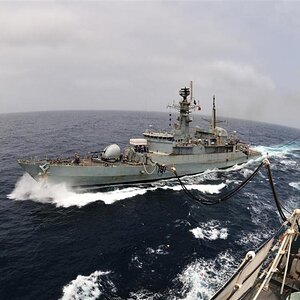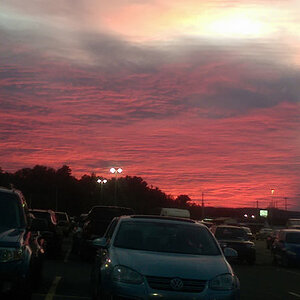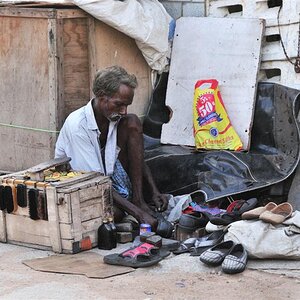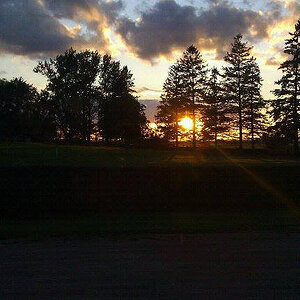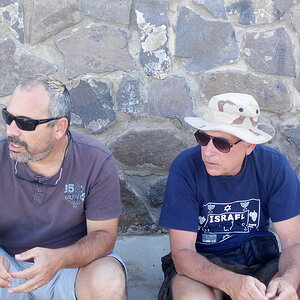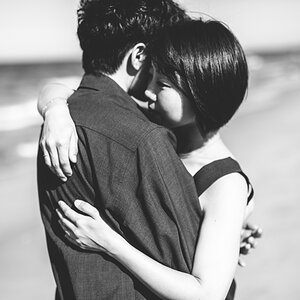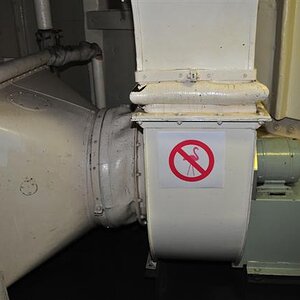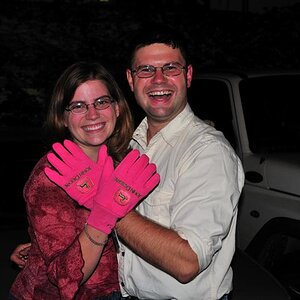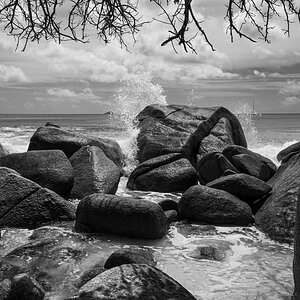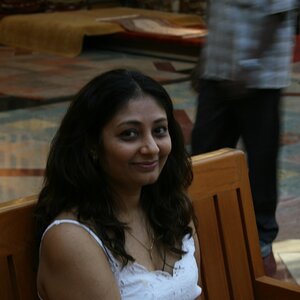I
Iron Flatline
Guest
Hi all.
I need to kick this around with some photographers, there is no where else to turn other than the Internet.
I want to make a major change in my photography. I am tired of street photography, which I have pursued for years. I will never abandon it, esp. when traveling, but I really go out and shoot people because it is easy for me. I grab one of my digital Rangefinders, and ride public transportation for a few hours. It's fun, and gets me out of the office. I like people and food stands and cities, it's where I spend my life.
But I'm bored by it.
What next?
Well, I have always admired the very large format prints of certain photographers. I love what Andreas Gursky does (who doesn't?!), Edward Burtynsky (The Ship-breaking, for instance), and especially Hans-Christian Schink.
So, I want to do that. Somehow I am attracted to the mechanical and deliberate process of shooting industrial landscapes. I know I'm not re-inventing the wheel of creativity, but this is a personal journey, I'm not earning a living as a creative artist.
Ok, so what do I do equipment-wise? I want as much sharpness as possible for large prints, and maximum Depth-of-Field. And I want maximum resolution.
I have two high-end cameras, but I'm not convinced they're up to the task - the Canon 5D, and the Leica M8. The Canon has a bigger sensor, and the Leica has very sharp lenses.
I bought a book called Medium and Large Format Photography, but I'm not learning as much from it as I would like. It bills itself as a guide to moving up from 35mm format for better pictures, but it doesn't provide enough help. It's more like a gear-head book (and believe me, I enjoy that kind of equipment pr0n) but I can't really get my head around how each camera works.
Also, and this is the most important part, I am unsure about work-flow. Let's for a moment assume that I can afford anything, do I want to work with digital backs? Or do I want to shoot film and then scan? I have become pretty reliant on the digital process - meaning histograms, and ability to see the shot. Without Polaroid I'm wary of working with film. But I'm not sure if digital can match the high quality of a large(r) negative. I read that most of the photographers I admire shoot film, scan and then print digitally.
...and finally, do I even need to go to a larger format? I own some Canon L lenses, and some Leica R lenses that mount to the EOS. The 1Ds Mk III has a lovely sensor (with LiveView for real easy shot-composition) and that might be good enough for now...
I do seem to have an unhealthy crush on the Linhof M 679 cc...
I will be in LA for the summer with nothing to do, so I am going to take some courses. I thought I was going to focus on lighting and studio work, but I think this might be a more interesting direction to take.
A teacher I took a class with (Architectural Photography with Doug Hill) shoots with a Hasselblad and a P39 back into a laptop with Capture One... I might start there by asking him for lessons.
So - how do I move to a larger format? Is it even worth it? How do I get my feet wet? I am hoping to get a discussion going here, I'm not even sure what to ask yet.
I need to kick this around with some photographers, there is no where else to turn other than the Internet.
I want to make a major change in my photography. I am tired of street photography, which I have pursued for years. I will never abandon it, esp. when traveling, but I really go out and shoot people because it is easy for me. I grab one of my digital Rangefinders, and ride public transportation for a few hours. It's fun, and gets me out of the office. I like people and food stands and cities, it's where I spend my life.
But I'm bored by it.
What next?
Well, I have always admired the very large format prints of certain photographers. I love what Andreas Gursky does (who doesn't?!), Edward Burtynsky (The Ship-breaking, for instance), and especially Hans-Christian Schink.
So, I want to do that. Somehow I am attracted to the mechanical and deliberate process of shooting industrial landscapes. I know I'm not re-inventing the wheel of creativity, but this is a personal journey, I'm not earning a living as a creative artist.
Ok, so what do I do equipment-wise? I want as much sharpness as possible for large prints, and maximum Depth-of-Field. And I want maximum resolution.
I have two high-end cameras, but I'm not convinced they're up to the task - the Canon 5D, and the Leica M8. The Canon has a bigger sensor, and the Leica has very sharp lenses.
I bought a book called Medium and Large Format Photography, but I'm not learning as much from it as I would like. It bills itself as a guide to moving up from 35mm format for better pictures, but it doesn't provide enough help. It's more like a gear-head book (and believe me, I enjoy that kind of equipment pr0n) but I can't really get my head around how each camera works.
Also, and this is the most important part, I am unsure about work-flow. Let's for a moment assume that I can afford anything, do I want to work with digital backs? Or do I want to shoot film and then scan? I have become pretty reliant on the digital process - meaning histograms, and ability to see the shot. Without Polaroid I'm wary of working with film. But I'm not sure if digital can match the high quality of a large(r) negative. I read that most of the photographers I admire shoot film, scan and then print digitally.
...and finally, do I even need to go to a larger format? I own some Canon L lenses, and some Leica R lenses that mount to the EOS. The 1Ds Mk III has a lovely sensor (with LiveView for real easy shot-composition) and that might be good enough for now...
I do seem to have an unhealthy crush on the Linhof M 679 cc...
I will be in LA for the summer with nothing to do, so I am going to take some courses. I thought I was going to focus on lighting and studio work, but I think this might be a more interesting direction to take.
A teacher I took a class with (Architectural Photography with Doug Hill) shoots with a Hasselblad and a P39 back into a laptop with Capture One... I might start there by asking him for lessons.
So - how do I move to a larger format? Is it even worth it? How do I get my feet wet? I am hoping to get a discussion going here, I'm not even sure what to ask yet.
As an Amazon Associate we earn from qualifying purchases.



